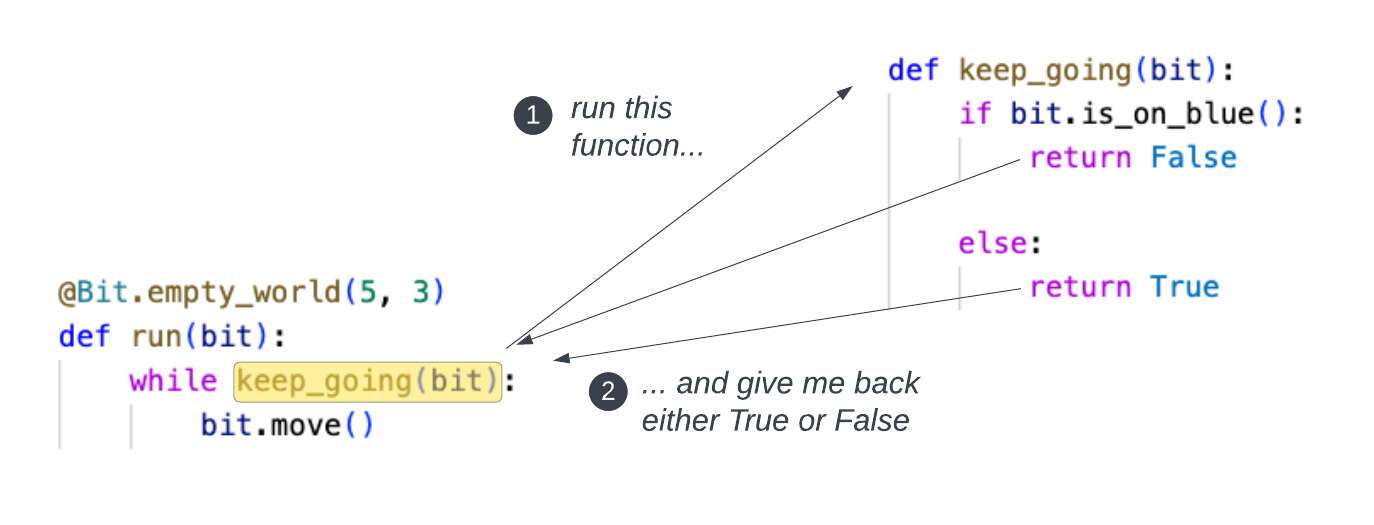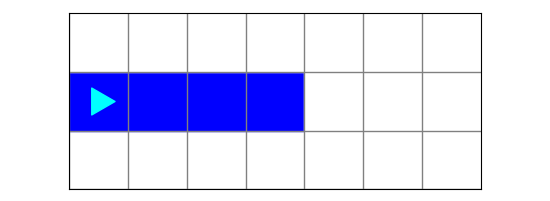To start this guide, download this zip file.
Return
So far we have been calling functions and not expecting anything back. For
example, when we define and call a function called paint_green():
def paint_green(bit):
while bit.can_move_front():
bit.paint('green')
@Bit.empty_world(5, 3)
def go(bit):
paint_green(bit)We are essentially saying “run the paint_green() function”, without
expecting anything back:

Functions can all return values back to the place where they were called:
def keep_going(bit):
if bit.is_on_blue():
return False
else:
return True
@Bit.empty_world(5, 3)
def go(bit):
while keep_going(bit):
bit.move()Here, the code is saying, “run the keep_going() function, and give me back
either True or False”:

TO return a value from a function, use the return statement. The value after
return is sent to the place where you called the function. For now, we will be
using return True and return False, and we will show you additional examples
later.
Example
Let’s see return in action. In this problem, Bit tries to follow a straight,
blue trail:

Sometimes the trail is longer:

Download the zip file linked above and store it in your bit folder. Find the
file called blue_trail:
from byubit import Bit
def keep_going(bit):
if not bit.can_move_front():
return False
elif not bit.is_on_blue():
return False
else:
return True
@Bit.worlds('blue-trail', 'blue-trail2')
def run(bit):
while keep_going(bit):
bit.move()
if __name__ == '__main__':
run(Bit.new_bit)
The keep_going() function returns False if (a) Bit is not clear in front or
(b) the current square is not blue. It returns True in all other cases.
Run this code and step through it with the buttons to understand how it works.